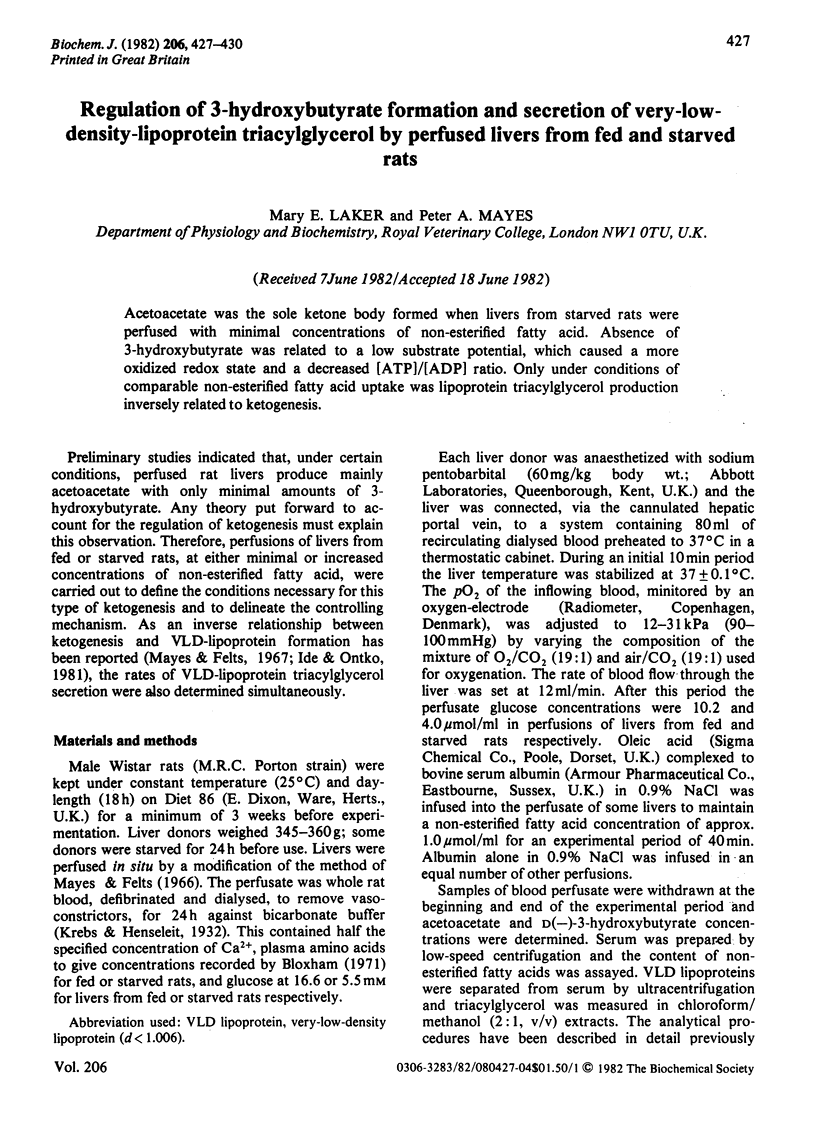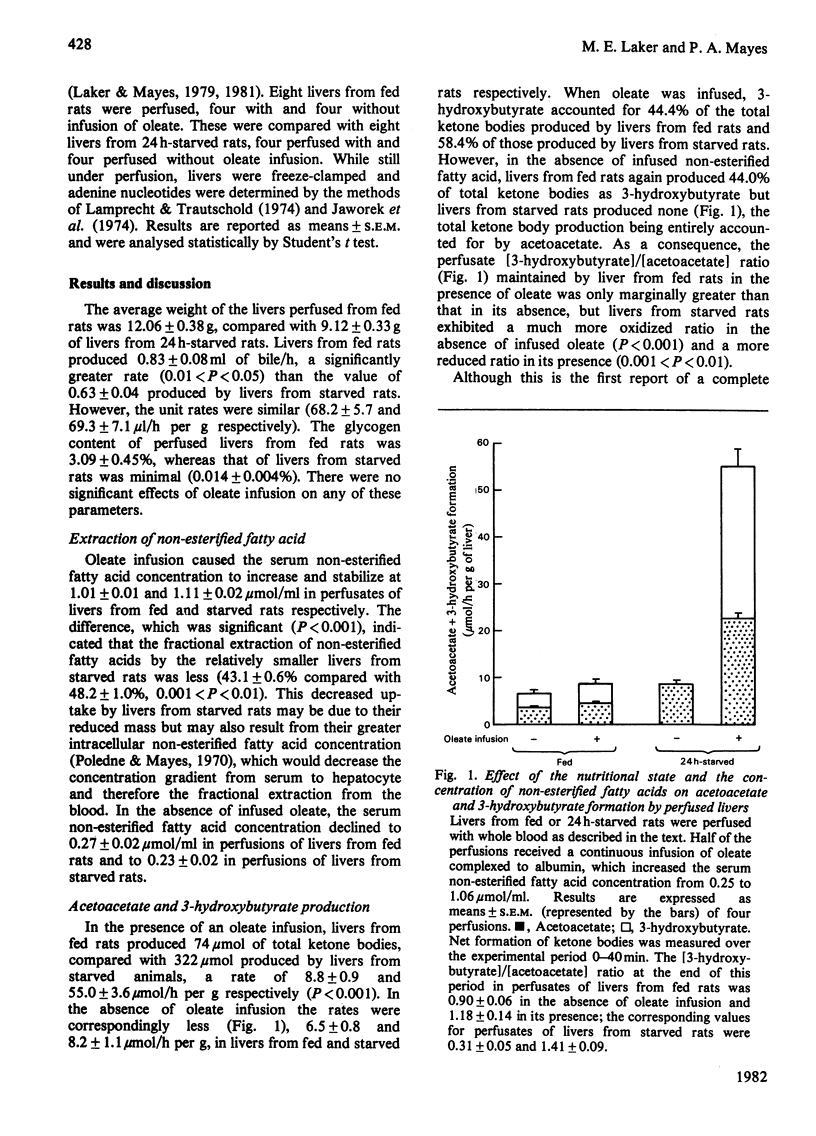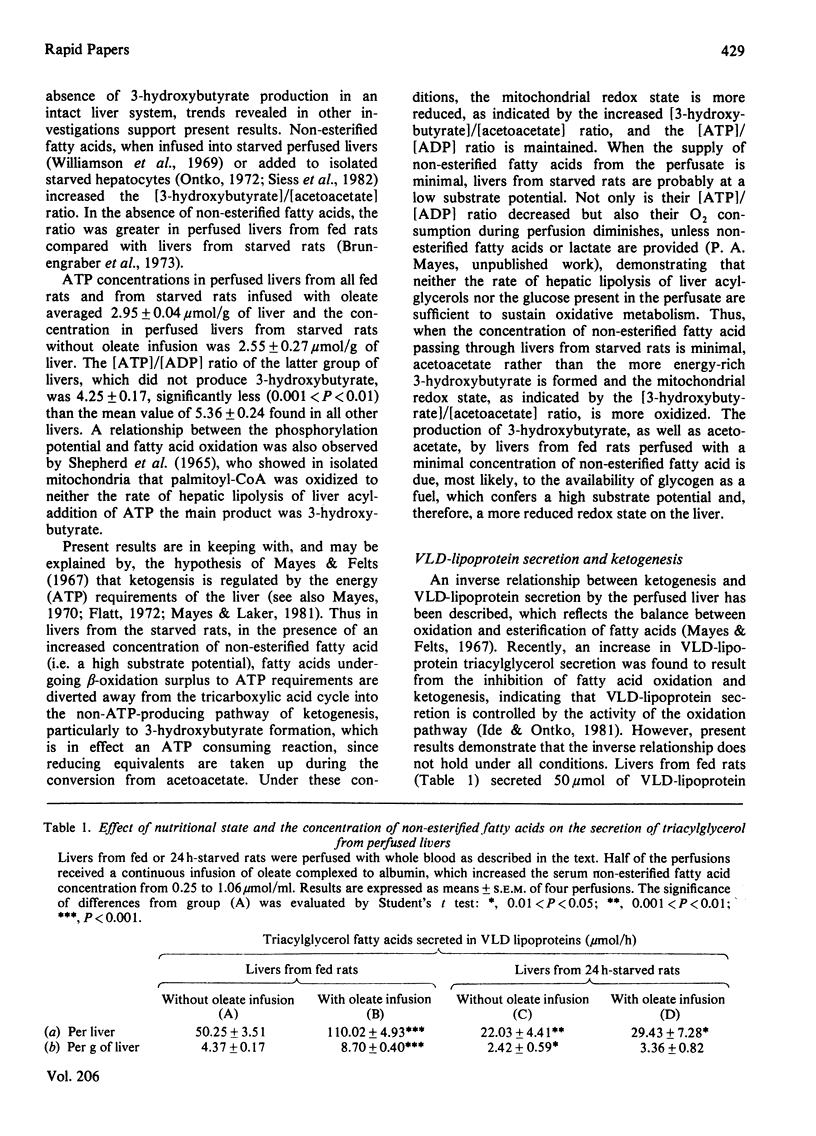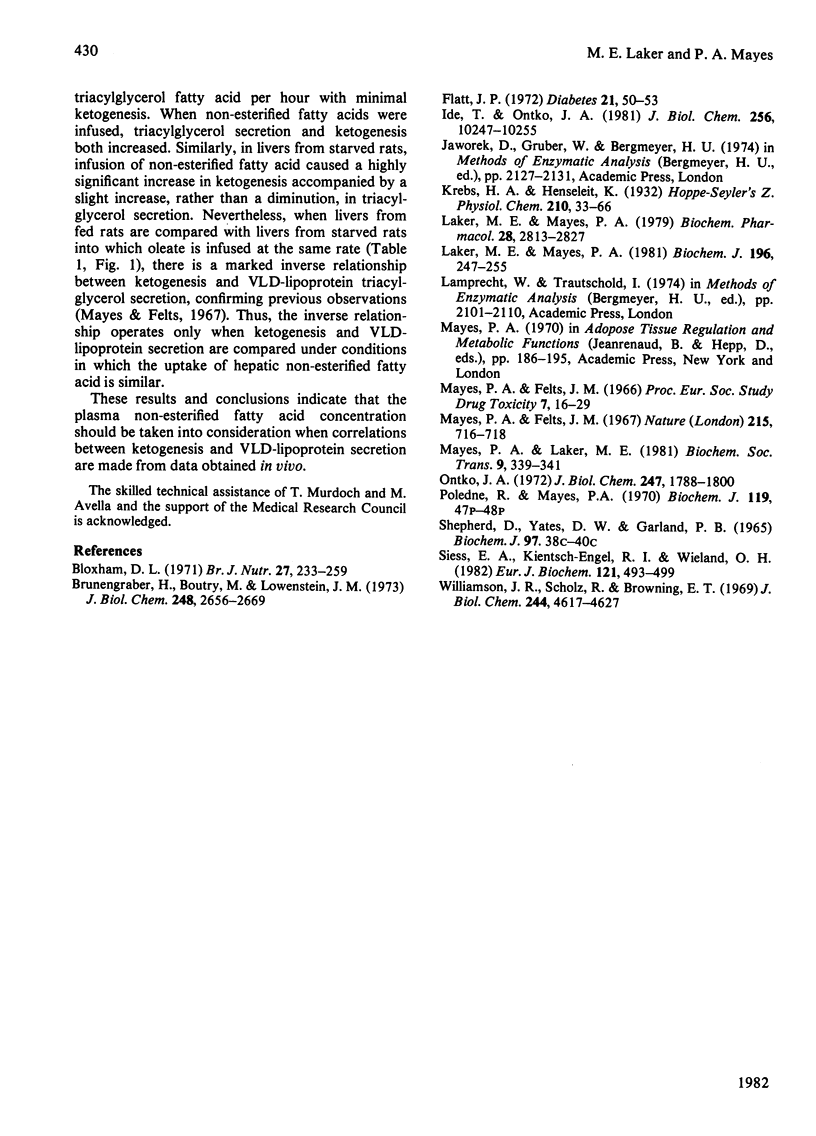Abstract
Acetoacetate was the sole ketone body formed when livers from starved rats were perfused with minimal concentrations of non-esterified fatty acid. Absence of 3-hydroxybutyrate was related to a low substrate potential, which caused a more oxidized redox state and a decreased [ATP]/[ADP] ratio. Only under conditions of comparable non-esterified fatty acid uptake was lipoprotein triacylglycerol production inversely related to ketogenesis.
Full text
PDF



Selected References
These references are in PubMed. This may not be the complete list of references from this article.
- Brunengraber H., Boutry M., Lowenstein J. M. Fatty acid and 3- -hydroxysterol synthesis in the perfused rat liver. Including measurements on the production of lactate, pyruvate, -hydroxy-butyrate, and acetoacetate by the fed liver. J Biol Chem. 1973 Apr 25;248(8):2656–2669. [PubMed] [Google Scholar]
- Flatt J. P. On the maximal possible rate of ketogenesis. Diabetes. 1972 Jan;21(1):50–53. doi: 10.2337/diab.21.1.50. [DOI] [PubMed] [Google Scholar]
- Ide T., Ontko J. A. Increased secretion of very low density lipoprotein triglyceride following inhibition of long chain fatty acid oxidation in isolated rat liver. J Biol Chem. 1981 Oct 25;256(20):10247–10255. [PubMed] [Google Scholar]
- Laker M. E., Mayes P. A. Effect of hyperthyroidism and hypothyroidism on lipid and carbohydrate metabolism of the perfused rat liver. Biochem J. 1981 Apr 15;196(1):247–255. doi: 10.1042/bj1960247. [DOI] [PMC free article] [PubMed] [Google Scholar]
- Laker M. E., Mayes P. A. The immediate and long term effects of clofibrate on the metabolism of the perfused rat liver. Biochem Pharmacol. 1979 Sep 15;28(18):2813–2827. doi: 10.1016/0006-2952(79)90567-7. [DOI] [PubMed] [Google Scholar]
- Mayes P. A., Felts J. M. Regulation of fat metabolism of the liver. Nature. 1967 Aug 12;215(5102):716–718. doi: 10.1038/215716a0. [DOI] [PubMed] [Google Scholar]
- Mayes P. A., Laker M. E. Regulation of ketogenesis in the liver. Biochem Soc Trans. 1981 Aug;9(4):339–341. doi: 10.1042/bst0090339. [DOI] [PubMed] [Google Scholar]
- Ontko J. A. Metabolism of free fatty acids in isolated liver cells. Factors affecting the partition between esterification and oxidation. J Biol Chem. 1972 Mar 25;247(6):1788–1800. [PubMed] [Google Scholar]
- Shepherd D., Yates D. W., Garland P. B. The relationship between the rates of conversion of palmitate into citrate or acetoacetate and the acetyl-coenzyme A content of rat-liver mitochondria. Biochem J. 1965 Dec;97(3):38C–40C. doi: 10.1042/bj0970038c. [DOI] [PMC free article] [PubMed] [Google Scholar]
- Siess E. A., Kientsch-Engel R. I., Wieland O. H. Role of free oxaloacetate in ketogenesis. Derivation from the direct measurement of mitochondrial [3-hydroxybutyrate]/[acetoacetate] ratio in hepatocytes. Eur J Biochem. 1982 Jan;121(3):493–499. doi: 10.1111/j.1432-1033.1982.tb05814.x. [DOI] [PubMed] [Google Scholar]
- Williamson J. R., Scholz R., Browning E. T. Control mechanisms of gluconeogenesis and ketogenesis. II. Interactions between fatty acid oxidation and the citric acid cycle in perfused rat liver. J Biol Chem. 1969 Sep 10;244(17):4617–4627. [PubMed] [Google Scholar]


